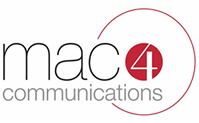
If you’re holding town hall meetings, making this forum an engaging two-way exchange of information is vital—but it can also be terrifying. When some leaders hear the words “Q&A session” or “interactive discussion” they sometimes picture the worst: “dead air,” instead of engagement; rambling employees who freeze up, instead of connection; leaders fumbling to answer emotionally charged questions, instead of transparency.
When you open up your large-group meeting to audience participation, there will always be an element of unknown. What will employees ask? What if they ask about something sensitive and we can’t answer, or we just don’t know the answer? Sure, there will be uncertainty—but good communicators know the value of the two-way exchange outweighs the potential downside.
Never fear, here are a few tried-and-true practices to help you control what you can, and plan for the rest.
- Compile questions. Poll both employees and leaders to find out what people want to know, either through direct conversations, focus groups, anonymous online surveys or paper drop boxes around your site. In every communication professional’s dream, Q&A would be a fully spontaneous session filled with engaging repartee, on salient topics—but in reality, that’s rarely the case. To avoid “crickets,” use employee input, your own knowledge of the organization, and what you want employees to know to develop a list of questions for your leaders. Once you have this list, it’s okay to “plant” questions with members of the audience, seed your virtual Q&A feed (more on this below) or put a few in your leaders’ back pockets in case of a lull in the Q&A. There’s nothing disingenuous about prepared or planted questions, especially if they’re based on an understanding of what employees want and need to know.
- Prepare your leaders. Share the question list in advance with leaders who will be part of the town hall, and help them prepare to answer completely but concisely in simple language, as well as brainstorm additional questions. If there are sensitive topics that require coaching from the communications team or counsel from HR or legal, seek that guidance as part of your preparation process—not an afterthought—so that leaders feel and project genuine confidence and care in answering employee concerns.
- Engage an AV (audiovisual) expert or team. Whether you’re managing a single-site town hall or the complexities of a multi-site broadcast via webcast or satellite, an AV expert is a must. You’ll want to involve your AV expert in the town hall planning and have him/her handle on-site presentation technology during the event. He/she can help you manage questions in the room so that both the question and the answer are clearly heard by all participants, and can help field and screen questions from virtual participants either by conference call operator or by reviewing an online question feed. That way, you can select the questions you or your leaders will answer. If multiple sites are submitting questions, also consider having a leader or communicator at each site ask questions in the web feed or conference line on behalf of the site, so that they can “prescreen” the questions before you or your leaders even see or hear them.
- Mix it up. To keep your town hall Q&A fresh, consider experimenting with different formats and options. Incorporate more voices into the discussion by having other leaders or high potential team members take a turn at answering questions. Turn the mic over to employees—ask them questions, and have them answer through online polls, speaking their responses or breaking into groups for a brief discussion and then reporting back.
With these practices in mind, you’ll be on your way to pulling off your next interactive town hall without a hitch.
Author: Kate Tomasco

